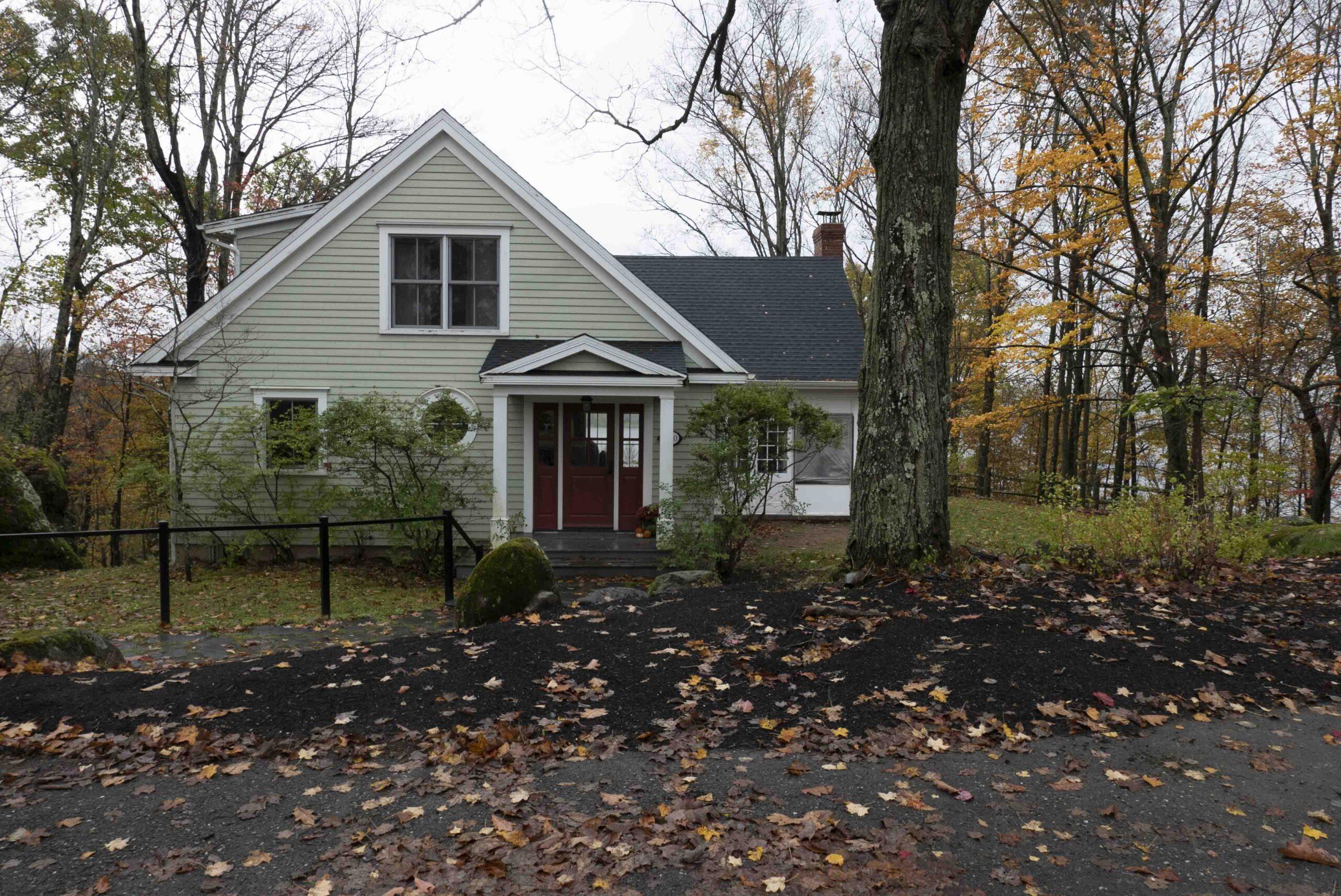Is it accurate to call The Big Lawn at Glen Villa The Big Meadow? If you use an American definition, the answer is yes. If you consult an English dictionary, the answer is less clear.
Webster’s Dictionary defines a meadow as a tract of low or level land producing grass which is mown for hay, and that definition fits precisely. Allowing the sweep of grass beside our house that was tended for decades to remain untouched produced six large bales of hay last year, the first year we didn’t mow regularly. Those bales were so big and heavy that we left them in place all winter, using them as buffers to prevent grandchildren sliding down a snow-covered hill from sliding over the bank and into the lake.
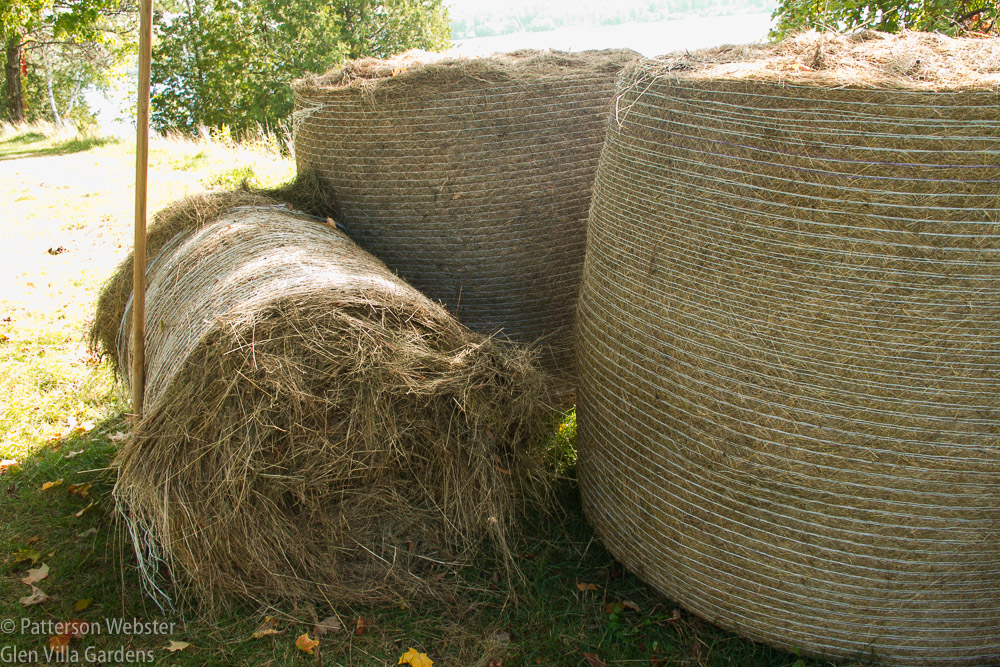
Bales come in different sizes. These are 4.5 ft across.
Based on an English dictionary that adds the presence of wildflowers to the mix, our Big Meadow is falling short.
Regardless of definitions, I consider wildflowers an essential element of a successful meadow. There are a few that have appeared on what used to be our lawn but not as many as I want. Far from it.
Trying to remedy this, I seeded selected areas of the Big Meadow last fall. The results were not impressive. A few seeds produced flowers but there were few, if any, signs of the long-lived perennials I’d been hoping for.
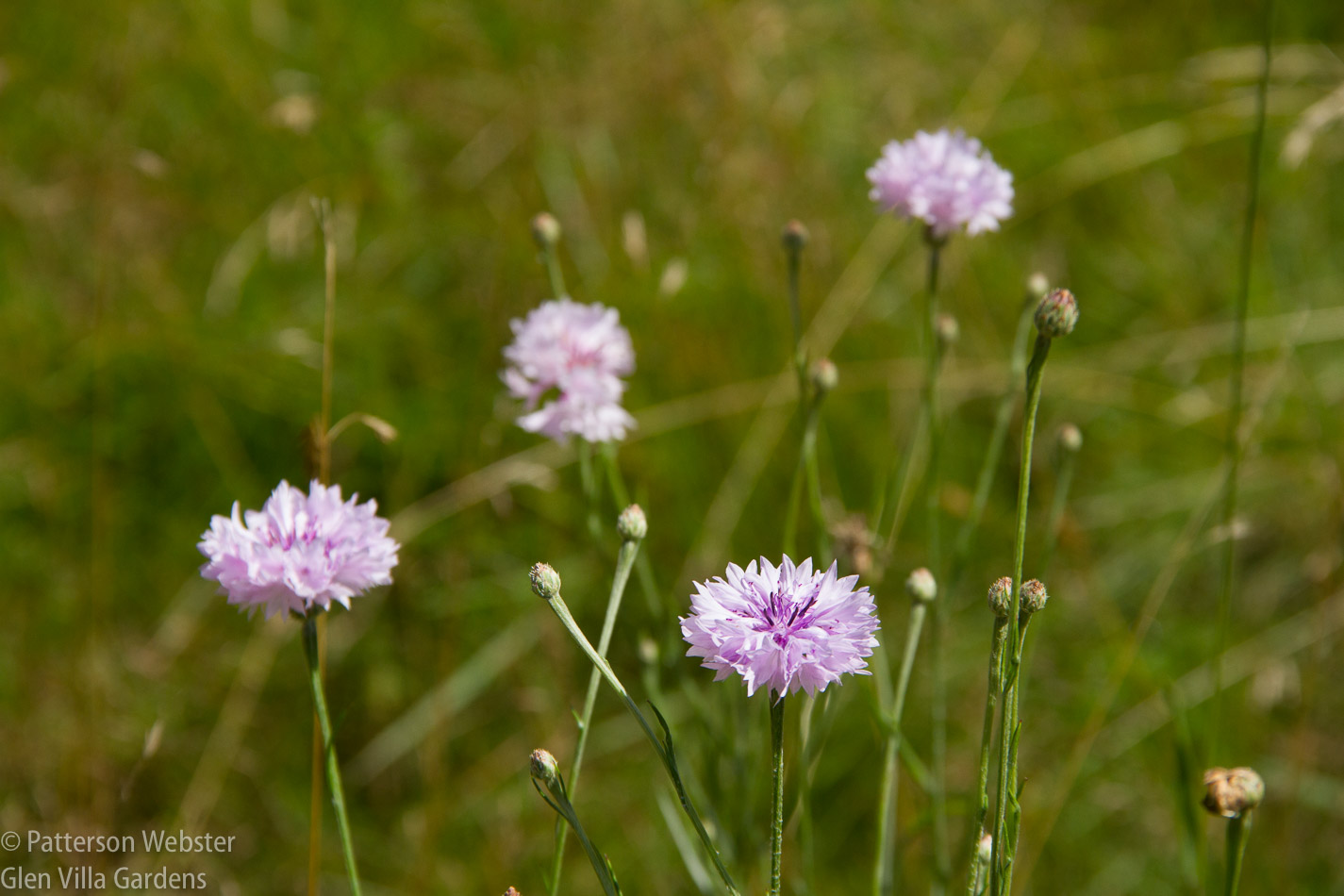
Flowers like these are part of most commercial wildflower seed mixes. They may bloom again next year but in year 3? I doubt it.
The impact of long-lived perennials continues year after year. And perhaps next year, the seeds I sowed will begin to show up. Perhaps, as well, the Agastache I planted will begin to spread. I hope so.
But in the meantime, slowly but surely, the patches of red dock, or sheep sorrel (Rumex acetosella) are spreading.
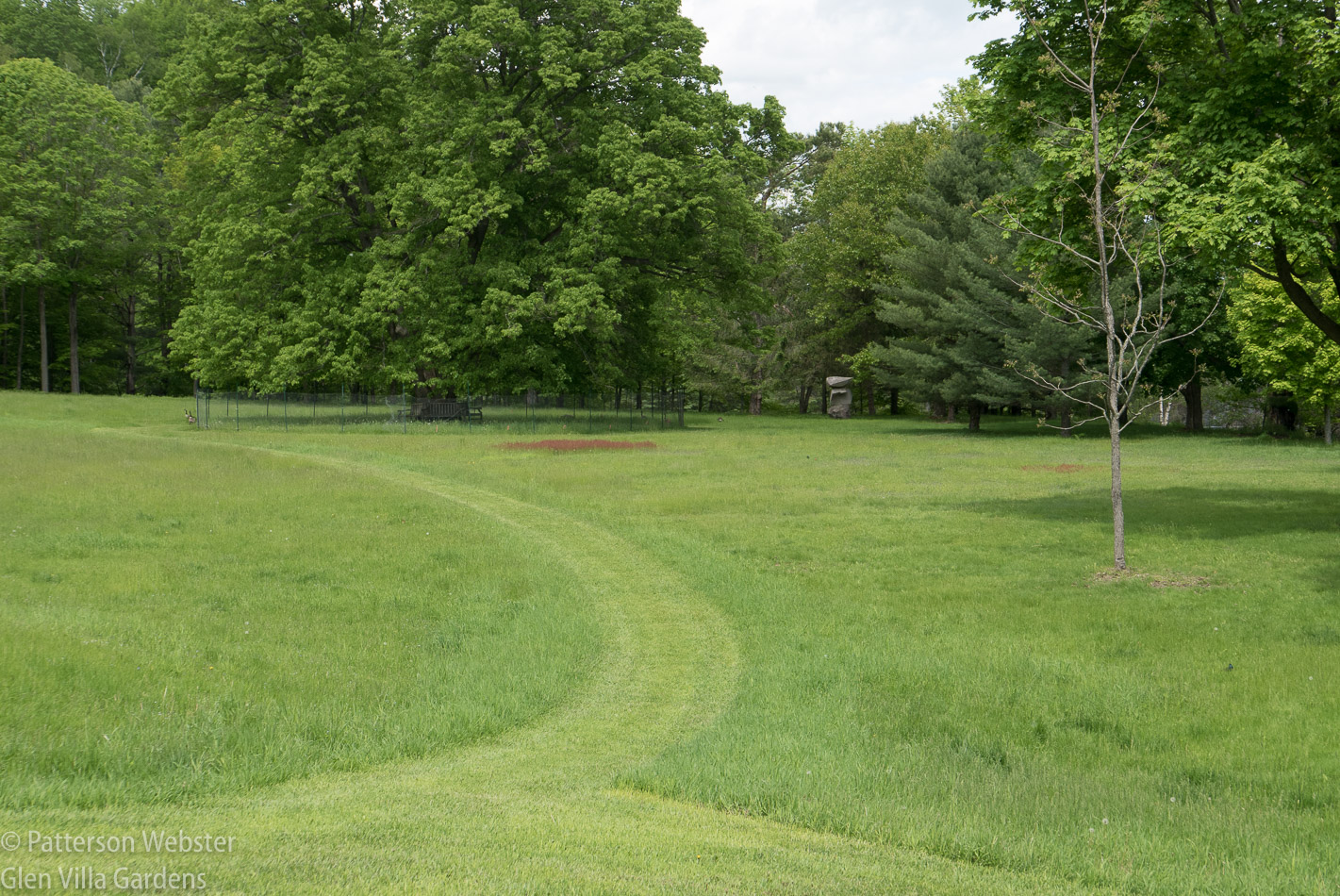
The patch of red dock near the linden tree is larger this year than last — or so I think. This year I actually measured it so that next year I can make a genuine comparison.
Unfortunately, so is the ragweed. Some hours were spent this year, removing each clump to ensure it didn’t go to seed. Mowing once a year in late September or early October will prevent the regrowth of a forest, the natural condition of land in this part of the world, but it won’t stop the ragweed. It is all around us and will continue to show up. This is discouraging and I don’t know whether I’ll have to accept it or continue to fight what I think will be a losing battle. (Advice, anyone?)
Last summer I chronicled the development of the lawn each month, delighted to see how the grass grew and changed colour, almost from week to week. This year, I’ve been less delighted, perhaps because I’ve been less surprised. But one thing has delighted me enormously — we’ve seen almost no Canada geese.
Getting rid of the geese was the first and perhaps the most important reason for making the change from lawn to meadow, and letting the grass grow seems to be doing the trick. Occasionally this summer a few geese stopped by, but there weren’t many, and they didn’t come often. What we saw instead were deer — lots of them, and almost daily.
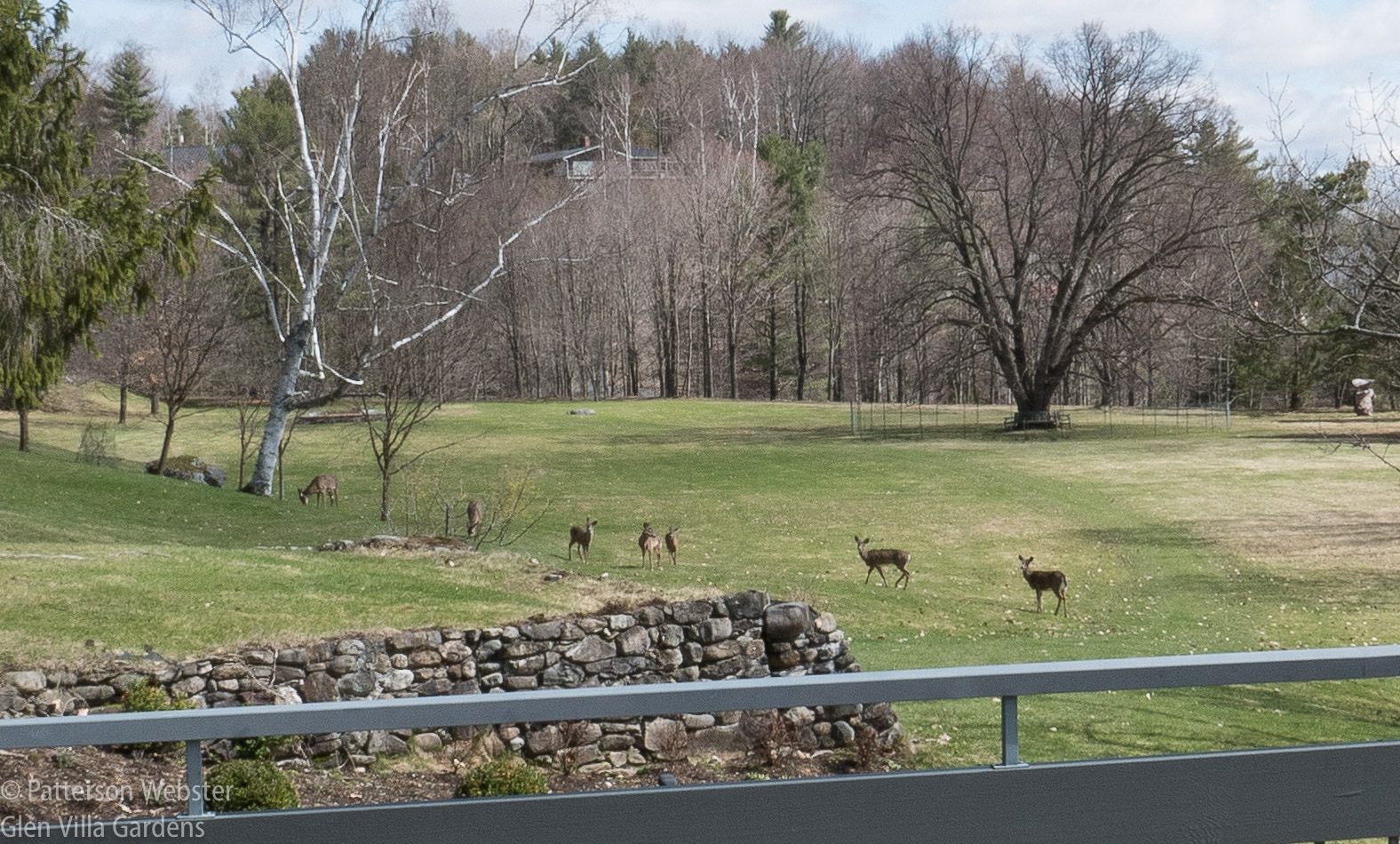
In late April a whole herd of deer appeared, only some of whom are shown in this photo. Throughout the summer a smaller group including three fawns appeared regularly. Seeing them play on the grass in the late afternoon was almost enough to make me like them.
The deer nibbled away at tender grass along the path and at anything (everything?) else that tickled their taste buds. I doubt it was the aesthetics that attracted them, but that was what appealed to me. The mown line, a curving strip of green, was a striking contrast throughout the summer months, whether seen from the house looking out…
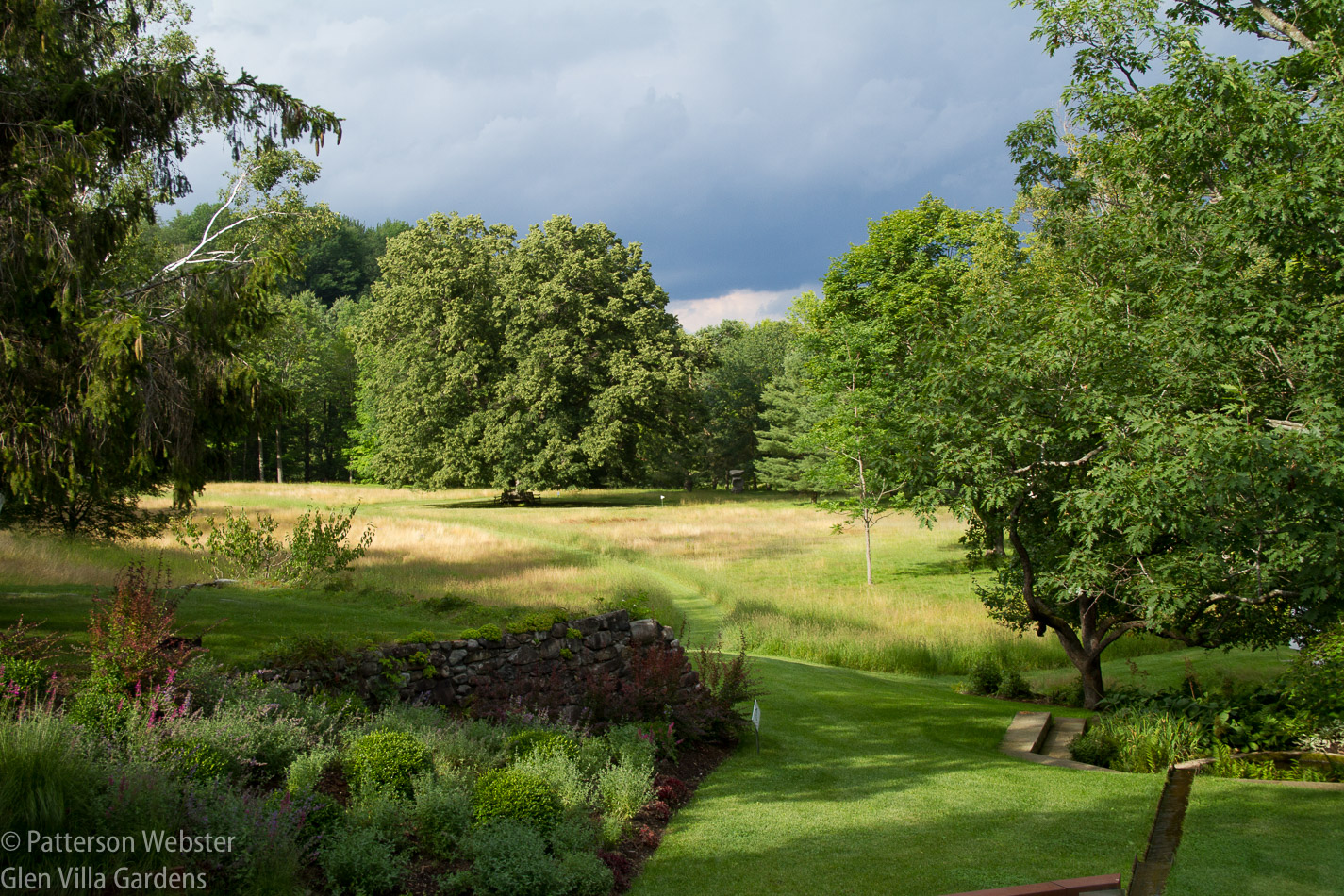
I took this photo near the end of July. The mown path remained green all summer, thanks to the amount of rain we received.
or from the linden tree looking back.
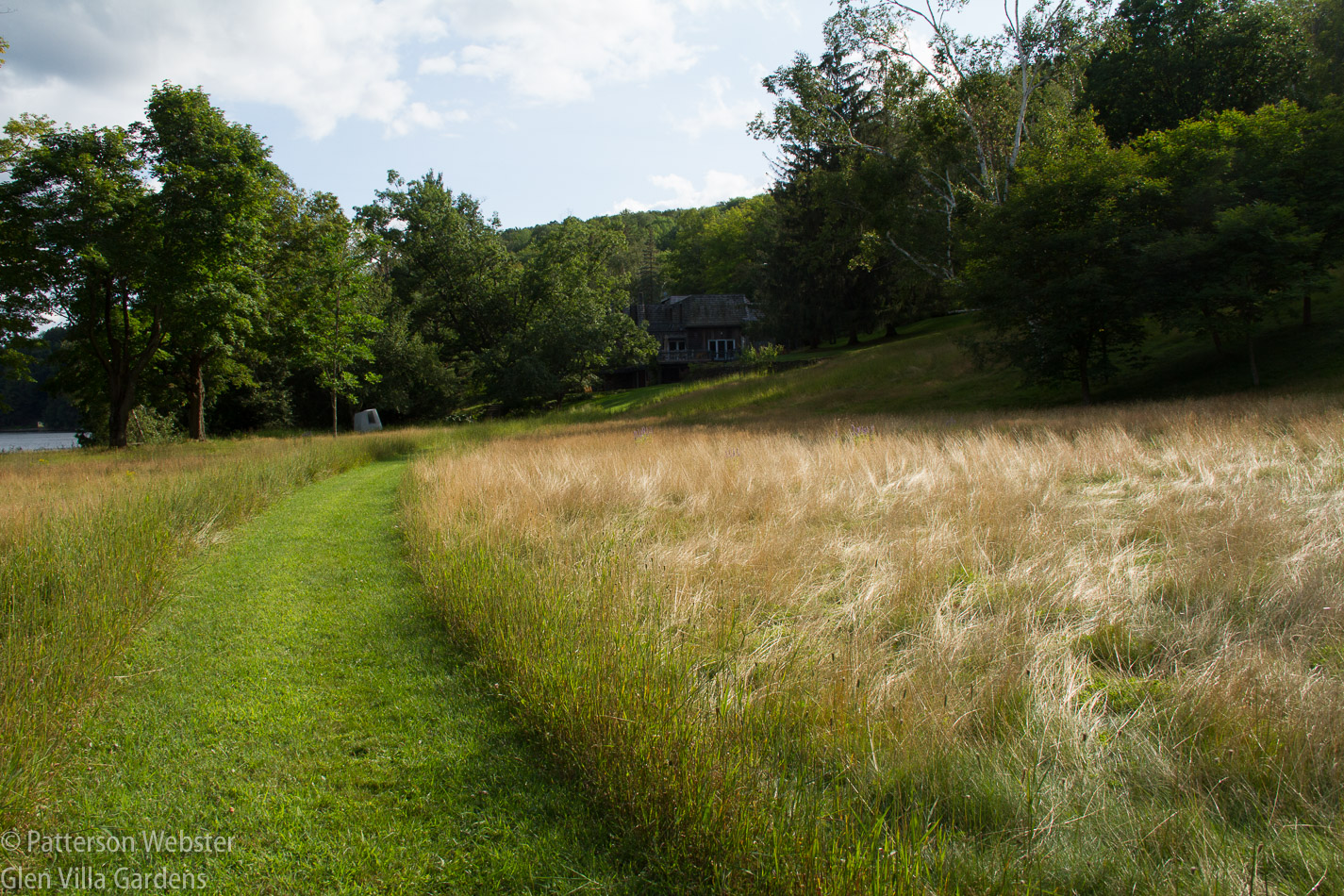
The house is almost hidden in the darkness at the end of the path.
Even now, as we near the end of September, the path is green and inviting.
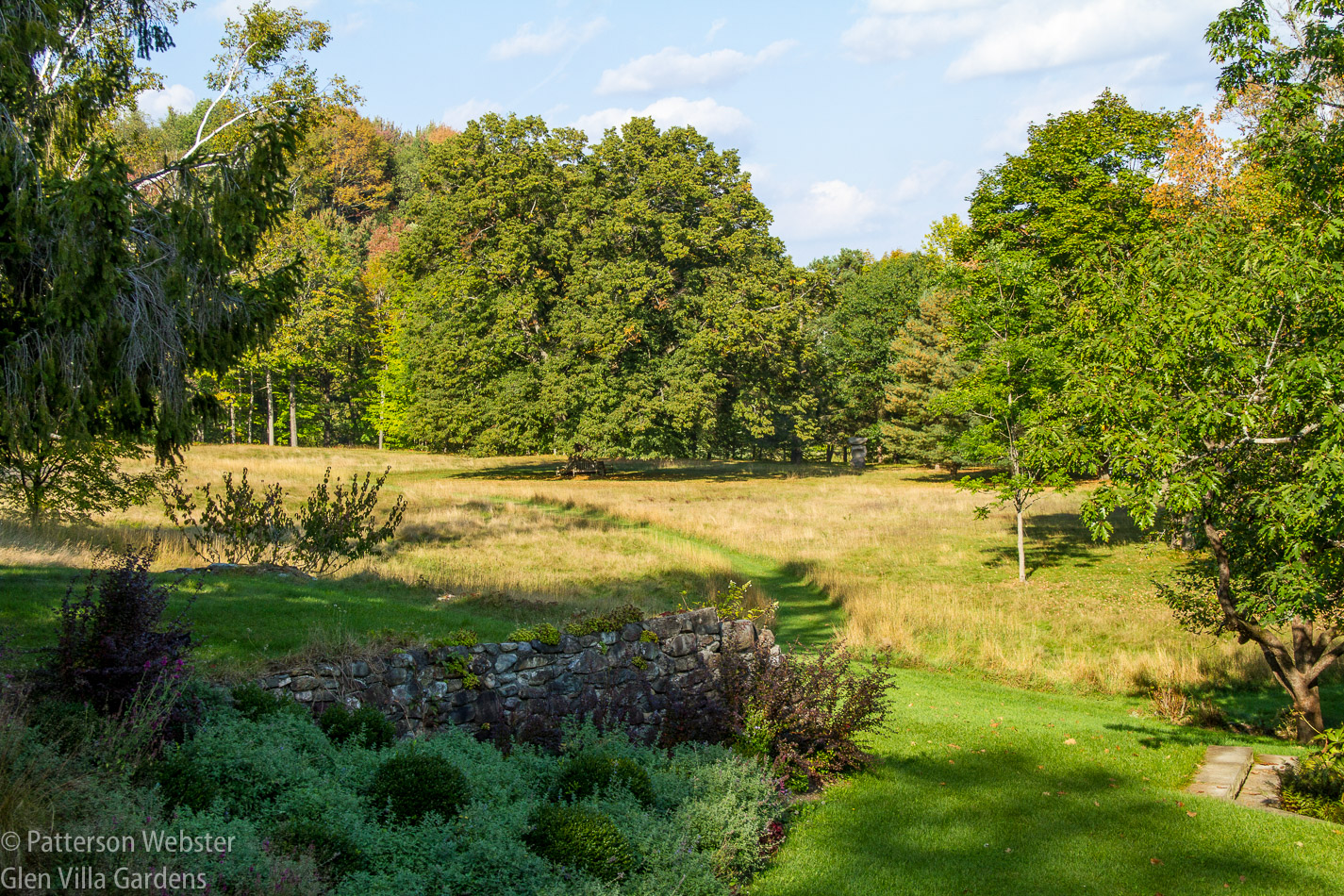
Late afternoon light casts shadows across the Big Meadow.
This second year of the transformation of lawn to meadow has gone well. Longer grass has discouraged the geese and attracted the deer, and this is a trade-off I’m happy to live with. So whether more wildflowers appear or not, I’m pleased. For now, at least.





